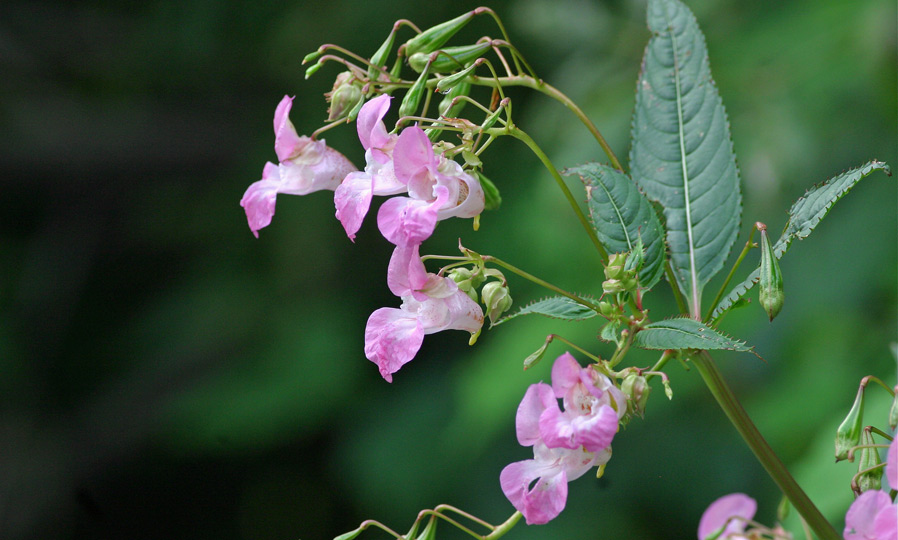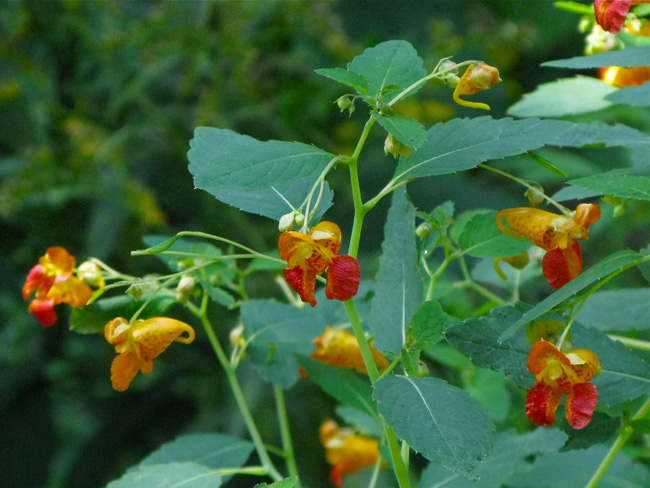A patch of Balfour’s touch-me-not (Impatiens balfourii) growing wild by the banks of the Don River last week. © BCP 2010
I found these lovely, delicate flowers growing in deep shade not far from the riverbank in the Lower Don Valley on my stroll there last week. There was a very small patch of them, growing only a few feet away from a dense thicket of orange jewelweed (Impatiens capensis). I had never seen anything like them before. Excellent — a new mystery for me to solve!
When I went searching in my wildflower identification book, I could find nothing that looked like these plants. But I thought their flowers looked suspiciously like the jewelweed, so I continued my investigation by seeing if I could find any near relatives to Impatiens capensis (also known as spotted touch-me-not) that could be contenders.
Jewelweed (Impatiens capensis) growing near the pink flowers in the Don. © BCP 2010
(For comparison, I have included a photo of the jewelweed patch (at left) that was growing alongside the unknown flowers.
I began roaming through online photos of other Impatiens species, until I found one that looks remarkably like my mystery specimen. I now think that the photo above is of Impatiens balfourii, commonly known as Balfour’s touch-me-not, poor man’s orchid and Kashmir balsam.
The latter common name reflects this plant’s origins. Here’s wiki on the subject: “It is native to the Himalayas, particularlyKashmir and surrounding areas, where it grows in mountains of 5,000 to 6,000 feet.[1] It was brought back to England as a garden plant, and then it became popular in the San Francisco Bay Areaand other parts of the United States.[1] It can now be found there growing wild as a garden escapee along the Pacific coast and in Wisconsin,[2] where it is well adapted to cool, wet sites.”
It seems to me that my mystery plant is a bit of Balfour’s touch-me-not that escaped from cultivation in someone’s garden.
I’d love to hear if anyone else has seen these pink flowers growing in the wild around Toronto. And any ideas regarding identification most appreciated.
© BCP 2010






3 comments